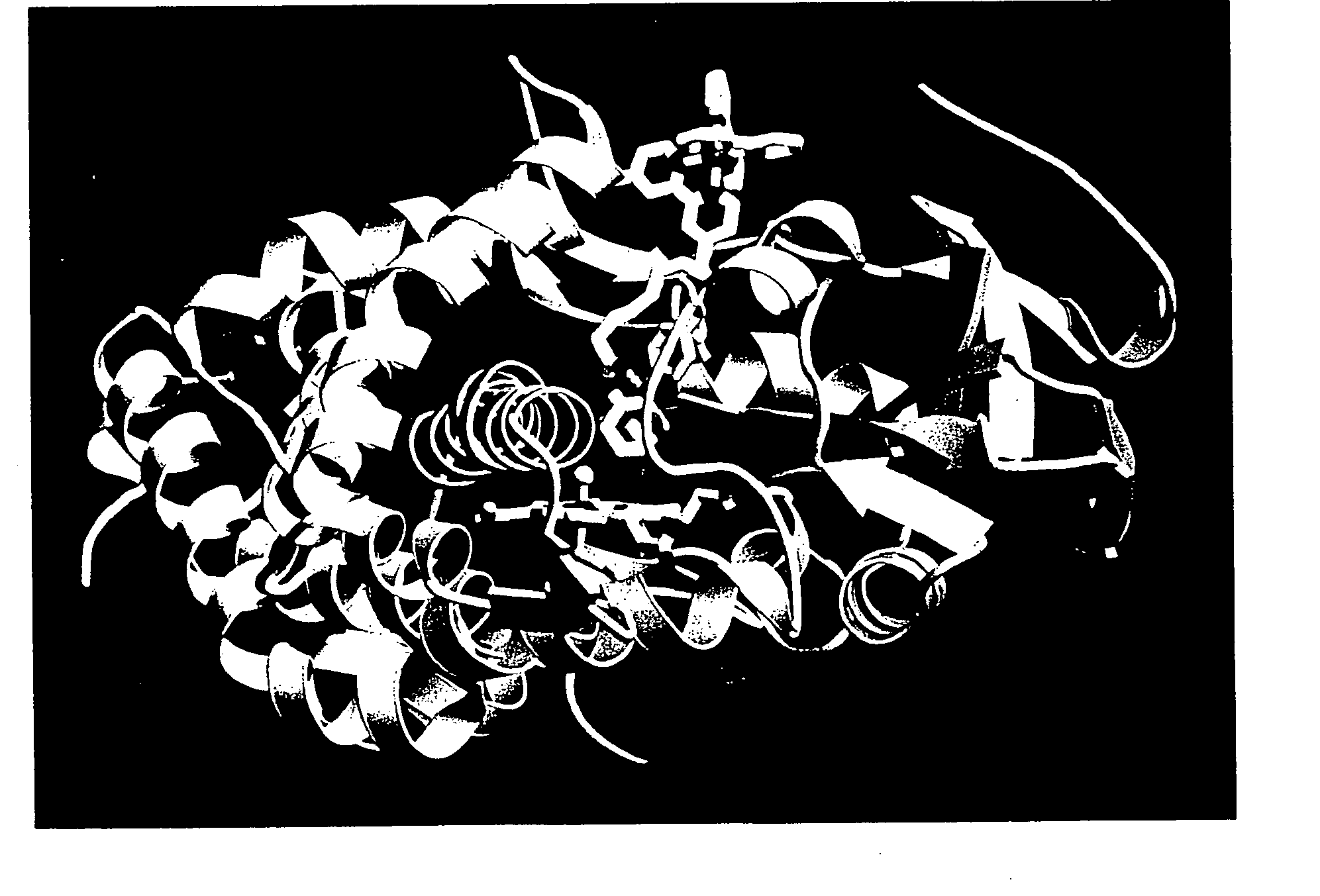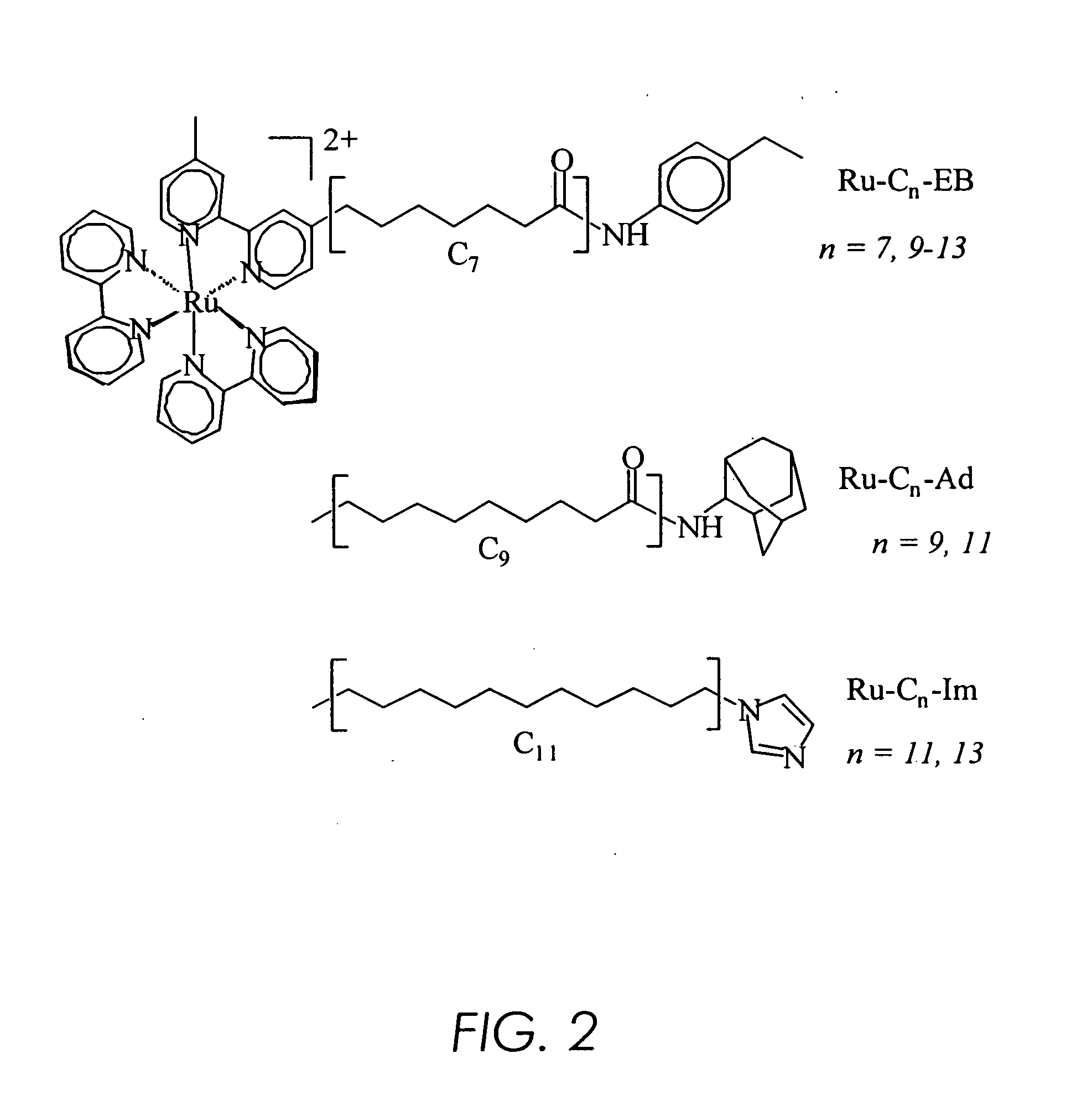Detection of biomolecules by sensitizer-linked substrates
- Summary
- Abstract
- Description
- Claims
- Application Information
AI Technical Summary
Benefits of technology
Problems solved by technology
Method used
Image
Examples
example i
This Example Describes the Optical Detection of Cytochrome P450 by Sensitizer-Linked Substrates.
Materials and Methods
Synthesises of Sensitizer-Linked Substrates
[0129] All manipulations were conducted under an argon atmosphere using standard Schlenk techniques. Solvents used for synthesis were dried, degassed and distilled according to standard procedures (A. J. Gordon, R. A. Ford, The Chemist's Companion. A Handbook of practical Data Techniques, and References (John Wiley and Sons, New York, 1972). D. D. Perrin W. L. F. Armarego, Purification of Laboratory Chemicals (Butterworth-Heinemann Ltd., Boston, 3rd Ed., 1988.).). Reactions were performed at room temperature unless otherwise stated. All reagents were used as received. NMR spectra were recorded on a General Electric QE300, and later a Varian Mercury 300, generally using dry CDCl3 or CDCl2 as solvent. 1H NMR spectral assignments refer to the schematic provided in depicting a typical bpy′ ligand used in this study.
Genera...
example ii
This Example Describes Enantiomeric Discrimination of Ru-Substrates by Cytochrome P45Ocam
[0184] It was found that substrates and ligands attached via an alkyl chain to the inorganic photosensitizer [Ru(bpy)3]2+ (where bpy is 2,2′-bipyridine) bind P450 reversibly [Wilker, J. J. et al. Angew. Chem. Int. Ed. (1999), 38, 90-92] with high affinity (KD˜1 μM) and specificity [as described in Example I infra, Dmochowski, I. J., et al. Proc. Natl. Acad. Sci. USA (1999), 96, 12987-12990]. The substrate [Ru—C9-Ad]Cl2 (FIG. 6) was recently crystallized with P450 and the X-ray structure determined to 1.55 Å (PDB code, lqmq; FIG. 7) [as described in Example I infra, Dmochowski, I. J., et al. Proc. Natl. Acad. Sci. USA (1999), 96, 12987-12990]. The adamantyl moiety resides in the heme pocket, much like the substrate adamantane. Electron density from the ruthenium and bipyridyl ligands appears in multiple positions near the substrate channel, thereby indicating either considerable mobility of the...
example iii
This Example Provides Data for Sensitizer-Linked Substrate Molecules as Viable Substrates for Cytochrome P450cam
[0207] [Ru—C9-Ad]Cl2, despite opening the P450 cavity, is a viable substrate, as shown by this example using electrospray mass spectroscopy assay. The rate and efficiency of [Ru—C9-Ad]Cl2 hydroxylation is compared to the untethered analog, 2-adamantantyl acetamide (FIG. 14). Resonance Raman spectroscopy of Fe2+-CO substrate complexes has been shown previously to be a sensitive reporter of the heme environment (O. Bangcharoenpaurpong, et al., J. Chem. Phys. 87, 4273-4284 (1987); C. Jung, et al., Biochemistry 31, 12855-12862 (1992); T. Uno, et al., J. Biol. Chem. 260, 2023-2026 (1985); A. V. Wells, et al., Biochemistry 31, 4384-4393 (1992)), and solution measurements comparing the binding of Ru—C9-Ad to adamantane agree with the crystal structure and substrate turnover results. Experiments attempting P450-mediated Ru—C9-Ad hydroxylation with steady-state photolysis suggest...
PUM
| Property | Measurement | Unit |
|---|---|---|
| Molar density | aaaaa | aaaaa |
| Molar density | aaaaa | aaaaa |
| Molar density | aaaaa | aaaaa |
Abstract
Description
Claims
Application Information
 Login to View More
Login to View More - R&D
- Intellectual Property
- Life Sciences
- Materials
- Tech Scout
- Unparalleled Data Quality
- Higher Quality Content
- 60% Fewer Hallucinations
Browse by: Latest US Patents, China's latest patents, Technical Efficacy Thesaurus, Application Domain, Technology Topic, Popular Technical Reports.
© 2025 PatSnap. All rights reserved.Legal|Privacy policy|Modern Slavery Act Transparency Statement|Sitemap|About US| Contact US: help@patsnap.com



